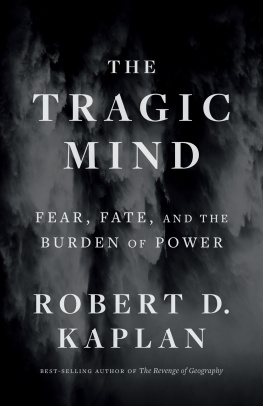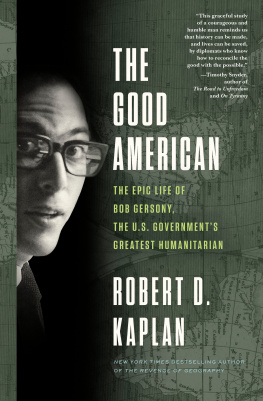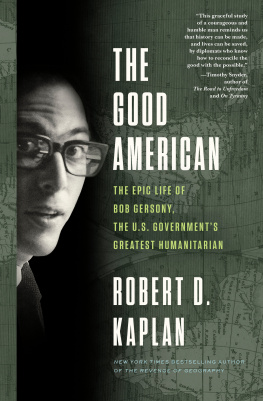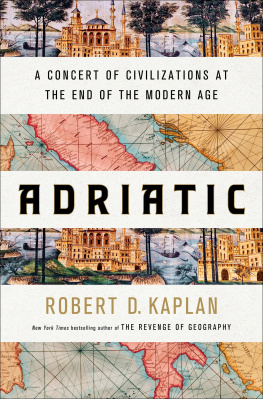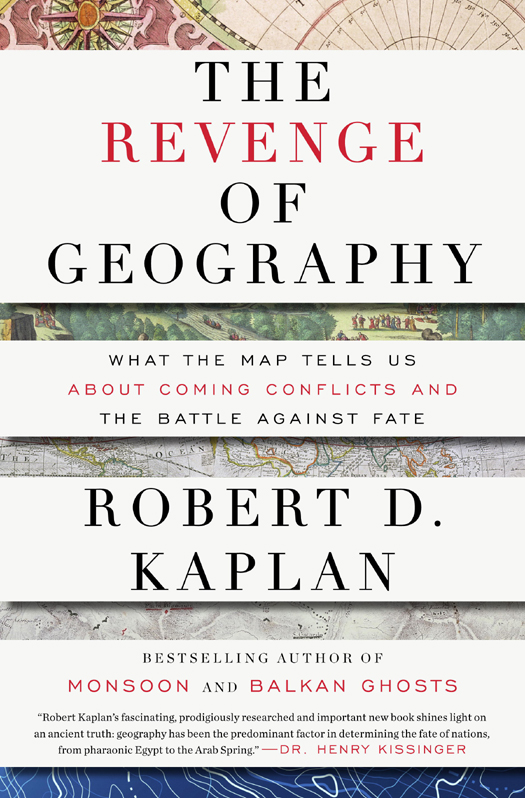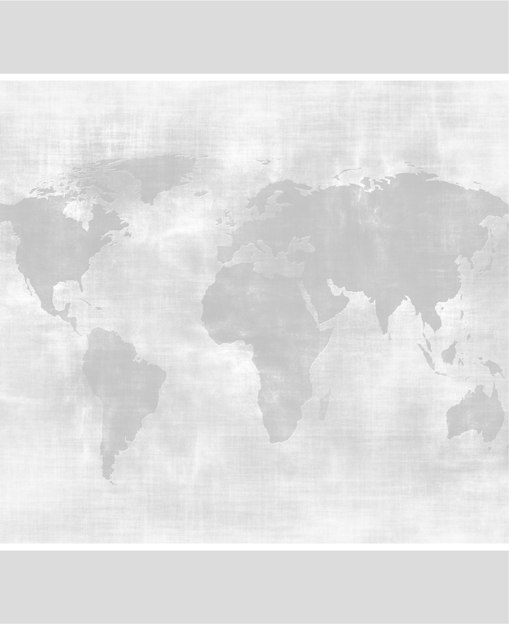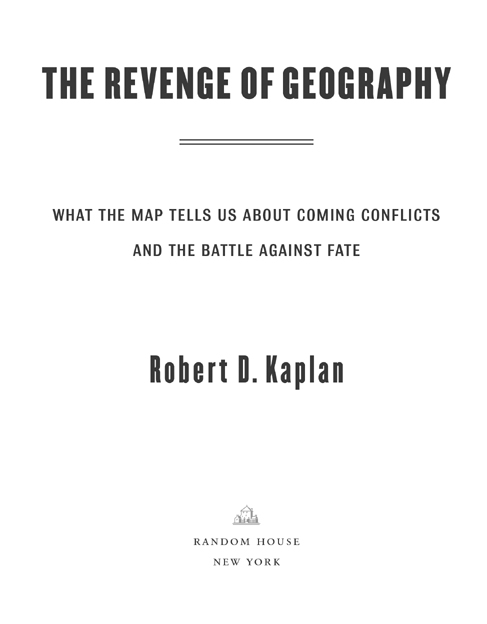Robert D. Kaplan - The Revenge of Geography: What the Map Tells Us About Coming Conflicts and the Battle Against Fate
Here you can read online Robert D. Kaplan - The Revenge of Geography: What the Map Tells Us About Coming Conflicts and the Battle Against Fate full text of the book (entire story) in english for free. Download pdf and epub, get meaning, cover and reviews about this ebook. year: 2013, publisher: Random House Trade Paperbacks, genre: Politics. Description of the work, (preface) as well as reviews are available. Best literature library LitArk.com created for fans of good reading and offers a wide selection of genres:
Romance novel
Science fiction
Adventure
Detective
Science
History
Home and family
Prose
Art
Politics
Computer
Non-fiction
Religion
Business
Children
Humor
Choose a favorite category and find really read worthwhile books. Enjoy immersion in the world of imagination, feel the emotions of the characters or learn something new for yourself, make an fascinating discovery.

- Book:The Revenge of Geography: What the Map Tells Us About Coming Conflicts and the Battle Against Fate
- Author:
- Publisher:Random House Trade Paperbacks
- Genre:
- Year:2013
- Rating:3 / 5
- Favourites:Add to favourites
- Your mark:
The Revenge of Geography: What the Map Tells Us About Coming Conflicts and the Battle Against Fate: summary, description and annotation
We offer to read an annotation, description, summary or preface (depends on what the author of the book "The Revenge of Geography: What the Map Tells Us About Coming Conflicts and the Battle Against Fate" wrote himself). If you haven't found the necessary information about the book — write in the comments, we will try to find it.
In The Revenge of Geography, Kaplan builds on the insights, discoveries, and theories of great geographers and geopolitical thinkers of the near and distant past to look back at critical pivots in history and then to look forward at the evolving global scene. Kaplan traces the history of the worlds hot spots by examining their climates, topographies, and proximities to other embattled lands. The Russian steppes pitiless climate and limited vegetation bred hard and cruel men bent on destruction, for example, while Nazi geopoliticians distorted geopolitics entirely, calculating that space on the globe used by the British Empire and the Soviet Union could be swallowed by a greater German homeland.
Kaplan then applies the lessons learned to the present crises in Europe, Russia, China, the Indian subcontinent, Turkey, Iran, and the Arab Middle East. The result is a holistic interpretation of the next cycle of conflict throughout Eurasia. Remarkably, the future can be understood in the context of temperature, land allotment, and other physical certainties: China, able to feed only 23 percent of its people from land that is only 7 percent arable, has sought energy, minerals, and metals from such brutal regimes as Burma, Iran, and Zimbabwe, putting it in moral conflict with the United States. Afghanistans porous borders will keep it the principal invasion route into India, and a vital rear base for Pakistan, Indias main enemy. Iran will exploit the advantage of being the only country that straddles both energy-producing areas of the Persian Gulf and the Caspian Sea. Finally, Kaplan posits that the United States might rue engaging in far-flung conflicts with Iraq and Afghanistan rather than tending to its direct neighbor Mexico, which is on the verge of becoming a semifailed state due to drug cartel carnage.
A brilliant rebuttal to thinkers who suggest that globalism will trump geography, this indispensable work shows how timeless truths and natural facts can help prevent this centurys looming cataclysms.
Praise for The Revenge of Geography
[An] ambitious and challenging new book . . . [The Revenge of Geography] displays a formidable grasp of contemporary world politics and serves as a powerful reminder that it has been the planets geophysical configurations, as much as the flow of competing religions and ideologies, that have shaped human conflicts, past and present.Malise Ruthven, The New York Review of Books
Robert D. Kaplan, the world-traveling reporter and intellectual whose fourteen books constitute a bedrock of penetrating exposition and analysis on the post-Cold War world . . . strips away much of the cant that suffuses public discourse these days on global developments and gets to a fundamental reality: that geography remains today, as it has been throughout history, one of the most powerful drivers of world events.The National Interest
Kaplan plunges into a planetary review that is often thrilling in its sheer scale . . . encyclopedic.The New Yorker
[The Revenge of Geography] serves the facts straight up. . . . Kaplans realism and willingness to face hard facts make The Revenge of Geography a valuable antidote to the feel-good manifestoes that often masquerade as strategic thought.The Daily Beast
From the Hardcover edition.
Robert D. Kaplan: author's other books
Who wrote The Revenge of Geography: What the Map Tells Us About Coming Conflicts and the Battle Against Fate? Find out the surname, the name of the author of the book and a list of all author's works by series.

